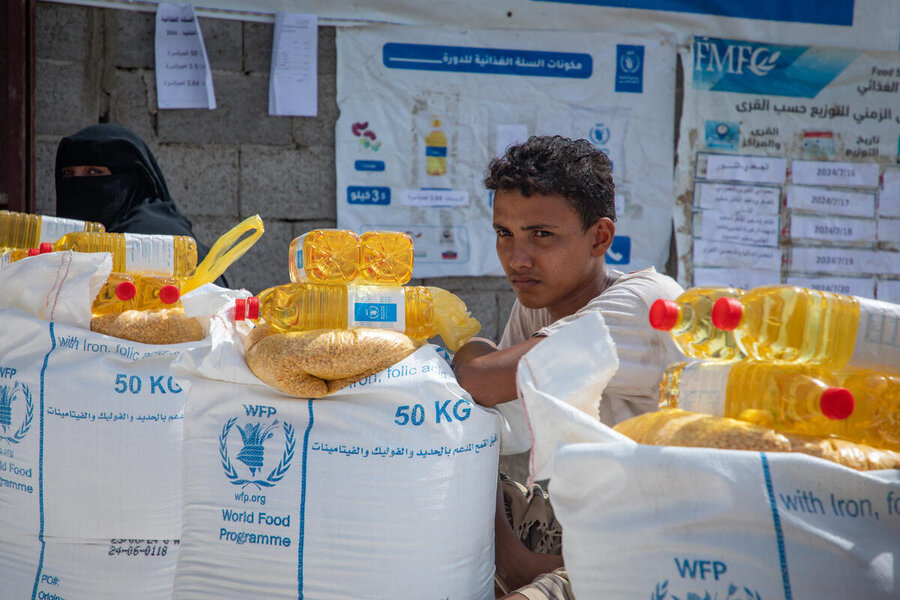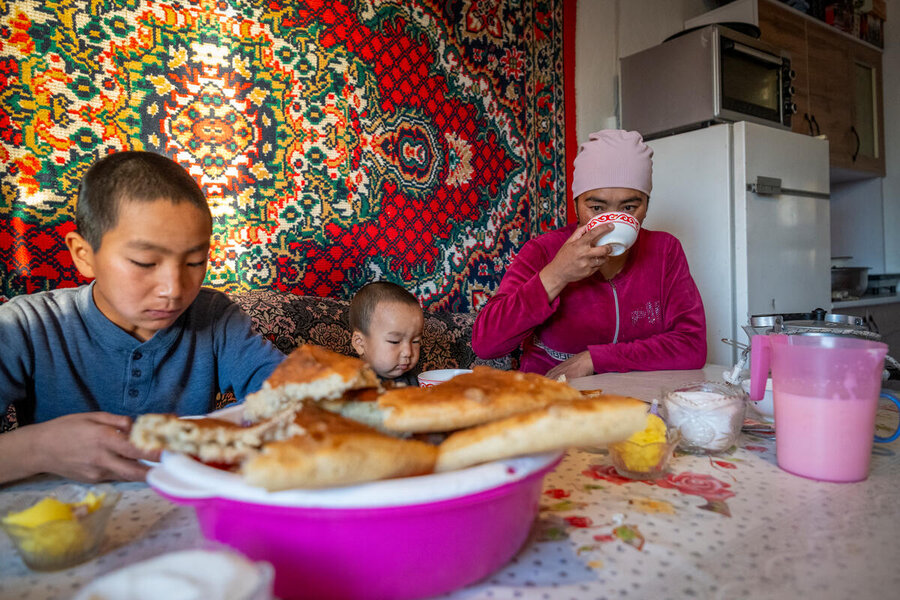All you need to know about the WFP food basket

What is a WFP food basket?
It's a selection of food items – or in some cases cash – that we provide to people who need our support. This is usually during an emergency or a protracted crisis, whether they've been displaced by conflict, caught up in a climate disaster or for other reasons. WFP has been using food baskets in ongoing emergencies, including in the Democratic Republic of the Congo, Gaza, Sudan and Ukraine, among other types of support that people receive. The selection of food is based on a family’s nutritional needs and their geographic and cultural contexts.
Is it really a basket of food?
"Food basket" is a term that is used in economics to help measure inflation. However, it’s also coined from what goes into a farmer's basket when they harvest their crops. It’s a concept that is widely used within the humanitarian field, economics and agriculture. It may in fact be a box or a parcel of food.
What's the exact purpose of the basket?
To help people meet their daily food or nutrition requirements. In contexts where people depend entirely on WFP for food assistance, we aim to provide them with the standard 2,100 calories each person needs daily for energy, and the right balance of other macronutrients (such as fat, protein) and micronutrients (such as vitamin A and iron), in line with common United Nations standards.
Where there are high levels of malnutrition, we add nutrient-rich, calorie-dense specialized nutritious food for pregnant and breastfeeding mothers and children under 5.
What's in a food basket?
This differs from place to place. Typically it contains cereals, pulses, vegetable oil and iodized salt. The cereals may be wheat, maize, rice, sorghum, millet or other types of grain. Pulses include lentils, cowpeas, beans and yellow split peas. WFP has committed to buying food from local suppliers wherever possible, and to increasing the proportion of wheat flour, maize meal and rice that is fortified.

How do we decide what goes in the basket?
The food basket is based on local food preferences and diets wherever possible. We monitor what's available on the local market, and what people are buying, to ensure we're providing the types of food people typically eat. Depending on how well local markets are functioning, the food basket can also be given in the form of cash or vouchers rather than actual food. We estimate how much on average a family would need to spend to get food from local markets – known as the Minimum Expenditure Basket. We then use this figure to determine the amount of cash we provide to families we support.
How do we adapt our food basket to cultural norms?
WFP researches the cultural significance of different foods and people’s preferences and dietary practices, to accommodate the beliefs, rituals, taboos and traditions of the communities we serve. For example, in many African countries, yellow maize, even though it is nutritious and high in vitamin A, is culturally perceived to be for animal consumption. We therefore use white maize in our food baskets. We also involve the governments of countries where we operate in discussions on the content of food baskets
How do we keep people informed about the contents?
WFP regularly communicates with people on the support we are providing. We use approaches such as SMS, noticeboards and in-person community briefings to explain when food assistance is arriving and what it consists of. As a general principle, WFP ration boxes always carry written information, such as. "This box contains 10 kg of rice, 15 kg of beans” and so on.
Is there any recycling around food baskets?
WFP has an environmental policy that country offices integrate into their operations. In some countries, people are required to return containers once the product is finished. We work with local organizations to convert cans or plastic containers into planting boxes for food, or recycle food sacks into other usable and environmentally friendly products. In Bangladesh for example, Rohingya refugees earn an income by transforming packaging waste into products including wallets, bags and floor mats. In Kenya, whatever WFP gets back goes to local organizations that convert them into bags, sandals and other items.
